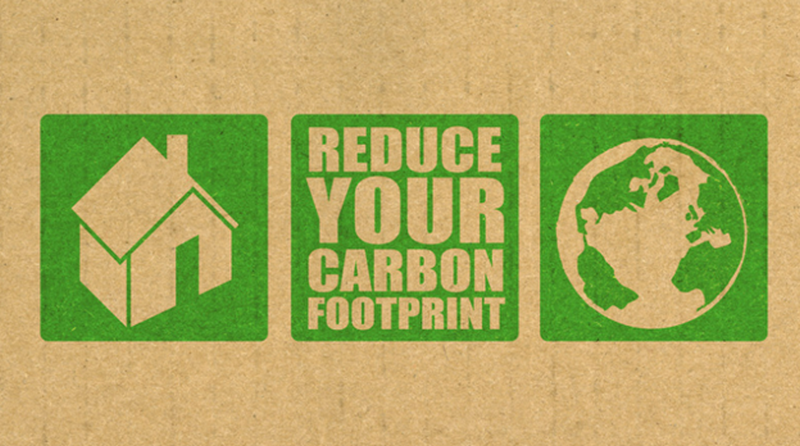
Why Choose Non-Toxic Finishes in Floor Tiles?
Have you ever considered the unseen effects of bathroom materials? Often, our focus is solely on the appearance and utility of a product, neglecting its environmental and health impacts.
Do you sometimes ask yourself how the coatings your bathroom floor tiles possess may influence the quality of indoor air and the natural environment? With specific reference to sustainable bathroom design, this article seeks to discuss the importance of choosing non toxic finishes on floor tiles.
The Environmental Impact of Traditional Tile Finishes
Cabinet and traditional tile finishes, for example, may contain volatile organic compounds (VOCs), which, as the name suggests, are chemicals that vaporize or emit gasses. These compounds are employed in a wide range of construction products and items and might be a potential source of indoor air pollution.
VOCs are emitted into the troposphere and upon photochemical reaction with nitrogen oxides and sunlight result in the formation of ground-level ozone, which is a major component of smog. This pollution has the potential of having disastrous consequences on the lives of organisms as it pollutes the soil and water through which plants and animals draw their nutrition.
Moreover, traditional tiles are produced through energy-intensive processes and derived from non-renewable sources. Raw materials like clay and sand for making pottery involve mining and firing, which releases massive amounts of carbon dioxide hence affecting climate change positively. Choosing antimicrobial and low-VOC-emitting finishes can minimize these adverse environmental effects.
Health Consequences of Hazardous Tile Coating
Maintenance of the quality of air in indoor areas is an important factor that defines people’s well-being. These days, modern bathroom floor tile is used as an alternative to minimize the health consequences of the traditional bathroom tile floor. This is because traditional tile finishes often emit VOCs, which can lead to numerous health complications.
Prolonged exposure to these compounds can lead to health issues such as asthma, allergies, headaches, and serious conditions like liver and kidney damage or cancer. Specifically, areas that are confined and have poor ventilation, such as the bathroom, can become susceptible to VOC buildup.
Whenever hot water is being used, it can in a way enhance the emission of these compounds to the atmosphere. This is why it can be very important to avoid selecting materials that release hazardous chemicals into the surrounding environment. Non-toxic finishes in floor tiles help maintain better indoor air quality, creating a healthier environment for occupants.
Benefits of Non-Toxic Finishes in Floor Tiles
1. Improved Indoor Air Quality
The absence of volatile organic compounds that are emitted by non-toxic tile finishes enhances internal environment air quality. This is important, especially in the washrooms where heat and steam can increase the rate at which VOCs are emitted from traditional coatings.
2. Reduced Environmental Footprint
Recycled tiles are typically made from sustainable materials and often require less energy to produce than their non-recycled counterparts. This assists in lessening the general impact on the environment due to a decrease in the amount of waste that is produced during construction.
3. Enhanced Durability and Maintenance
Some of the non-toxic finishes are not only less risky but also more long-wearing and less exacting. They can hold back mold, mildew, and stains better than most normal goods; this prolongs their overall durability and lowers the need for abrasive cleaning solutions.
4. Aesthetic Versatility
Sustainable tiles are available with style, color, and texture variations that will allow them to meet any requirement. Renewable products also prove that people who choose to use them do not have to opt for uglier designs and styles. These finishes can seamlessly integrate into various design concepts, from modern contemporary to simple elegance and timeless luxury.
Types of Non-Toxic Tile Finishes
1. Natural Stone
Marble, granite, and slate are examples of natural stone tiles that do not require the usage of synthetic products in finishing since they are harmless. It should be noted that they are rather long-wearing goods that are elegant and will not look out of place in any bathroom.
2. Ceramic and Porcelain Tiles
The recommended tile for this setting should be ceramic and porcelain tiles that have been naturally glazed. These tiles are manufactured from naturally occurring clays and other fundamental materials and are baked to preserve such qualities and reduce the use of environmentally unfriendly components.
3. Recycled Glass Tiles
These tiles are manufactured using post-consumer and post-industrial glass, making them suitable for environmentally friendly use. It does not give off VOCs and it can bring about a more colorful appearance into your bathroom.
4. Linoleum Tiles
Often confused with vinyl, linoleum is made from natural components such as linseed oil, cork powder, and wood flour. It is environmentally friendly because it is biodegradable and does not produce toxic fumes after installation, making it perfect for use in sustainable design.
Implementing Sustainable Bathroom Design
To incorporate non-toxic finishes into your bathroom design, consider the following steps:
1. Research and Source Materials
Research on other green tiles and other surfaces that can be used in the construction of homes. Prefer floorings that bear certifications, which means that they will not emit high levels of VOCs.
2. Consult with Professionals
Make a point of approaching architecture and interior design firms with contractors who are involved in green building. They give you the necessary advice on what to do and how to have the right installation.
3. Consider the Entire Ecosystem
Looking at sustainable solutions in bathroom design is not limited to the use of tiles. Ensure that you incorporate water-saving fixtures, and efficient lighting, and use eco-friendly paints and cabinetry to design a green kitchen.
4. Regular Maintenance
Sustainable tiles mimic the natural look and feel commonly associated with tiles but come with specific maintenance regimens. Cleaning the kitchen tiles with appropriate products from time to time will help to maintain the new look of the tiles and the health and hygiene of the kitchen.
The Future of Sustainable Bathroom Design
| Key Aspect | Description |
| Growing Awareness | Increasing awareness of environmental issues and health concerns is driving demand for sustainable materials. |
| Innovation | Advances in eco-friendly technologies and materials will expand options for non-toxic finishes. |
| Importance of Staying Informed | Homeowners, builders, and designers need to stay updated on sustainable developments. |
| Prioritizing Sustainability | Emphasizing sustainability in projects will become increasingly important. |
Conclusion
Integrating non-hazardous coatings into tiled floors is a fundamental strategy for green bathroom design. From enhancing the quality of indoor air to limiting emissions with adverse effects on the environment and the health of citizens, the advantages known to many cannot be overemphasized.
It is possible to offer a beautiful and elegant, functional and practical, comfortable and modern, and, at the same time, environmentally friendly and safe bathroom if lots of attention is paid to these questions and if the correct decisions are made with the help of competent specialists and choosing the right materials. Adoption of sustainable design practices today makes much more sense to improve the overall quality of life and environment for the next generations.
FAQs
1. Why are non-toxic finishes important for bathroom floor tiles?
Non-toxic finishes are crucial for maintaining good indoor air quality and preventing health issues related to exposure to volatile organic compounds (VOCs). They also reduce environmental impact by using sustainable materials and production methods.
2. What are some types of non-toxic finishes available for bathroom tiles?
Non-toxic finishes include natural stone, ceramic, and porcelain with natural glazes, recycled glass, and linoleum tiles. These materials are eco-friendly and do not emit harmful chemicals.
3. How can I implement sustainable design in my bathroom?
To implement the sustainable design, research, and source eco-friendly materials, consult with professionals specializing in sustainable design, consider the entire ecosystem by using water-saving fixtures and energy-efficient lighting, and maintain the tiles with non-toxic cleaning products.
Article Submitted By Community Writer
creditSource link







